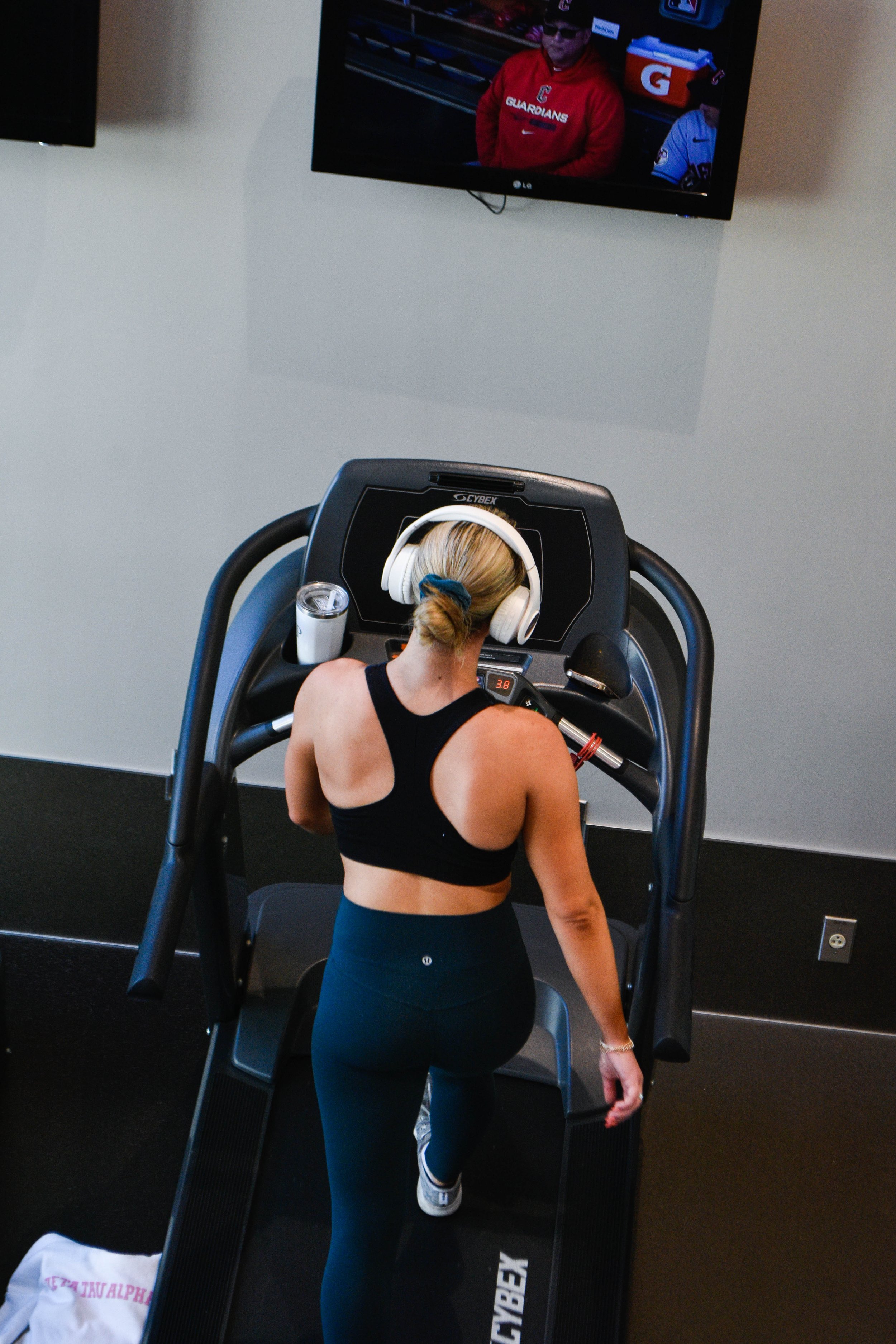How to Get Motivated and Stay Motivated!

How many times have you said, "I am going to get fit!" And how many times has that goal been achieved?
I would guess the desire to get fit outweighs the goal being reached. There can be many reasons, but I think a number of these failed attempts are involved with psychology. A multifaceted approach is necessary to achieve behavioral change, and the approach also should be personalized to each individual. I will offer some suggestions on how to maintain motivation in general, and hopefully, they can be shaped to fit your desired goal.
Motivation
Motivation is intense and directs one's effort. One's motivation differs per gender, socioeconomic status, job, and age, among many other factors. Motivation can also change over time. Think about the last time you were seeking to achieve a goal. Maybe you were studying for an exam and were super motivated at the beginning and then by hour three or four you're done for the day. Or you're set on studying for the night until you remember there's a party or sports game that night so the likelihood of you actually studying becomes very slim.
Motivation can arise slowly or abruptly. Maybe you see on Instagram someone who lost weight doing a diet, and suddenly you want to do the same thing. The nature of motivation can differ in its length and intensity as well as how it arises in someone.
There are two types of motivation: intrinsic and extrinsic. Intrinsic are more interior motives for doing something. For instance, a desire to take care of your well-being. These have been shown to be more effective for long-term success. Extrinsic motivation, on the other hand, involves recognition from others. For instance, someone who wants to get fit because they are about to go on a beach trip with some friends. Having motivation for your goal is how success is achieved, so understanding how to increase motivation is very helpful when seeking to reach a goal.
The most common hindrances to adhering to one's goal are:
Time
Unrealistic Goals
Lack of Social Support
Social Physique Anxiety
Convenience
Ambivalence
Time
How many times have you heard, or said the words "I am too busy." This is a common experience in our world today, but I would argue there is always time, you just have to be willing to choose what is worth your time. There are real responsibilities people experience from being a student, to a parent, to an employee, but there are ways to find time to work out. It may require communication with your boss in order to create time or waking up a little earlier than you're used to. Almost all resolutions involve a sacrifice. To find time, it is best to manage time realistically every day to be more organized. Google Calendar is a great resource for organizing events and tasks.
Unrealistic Goals
People can easily be caught in a trap of setting unrealistic goals. These goals can be due to being super excited or seeing something on social media that isn't completely true, making someone think it is attainable when it's not. For instance, someone thinks they can lose a large amount of weight in a short time. A helpful way to set realistic goals is to set an "outcome goal" and a "process goal." An outcome goal is the overall goal you desire and the process goal is the small incremental goals that eventually achieve your desired outcome. For instance, an outcome goal is to lose five pounds while the process goal would be jogging for 30 minutes four days a week while eating a specific diet plan.
Lack of Social Support
As humans we need support! Especially when seeking to change a behavior, we need people around us for accountability. When we are with people, the challenge becomes more attainable because we are not alone. Think about one time when you felt encouraged by a friend. It probably boosted your morale and encouraged you to keep going. Now think of a time you gave up your behavior change. Was it due to social pressure? Or "fitting" into a crowd? Or was it just "easier" to do what everyone else was doing? We often fail to achieve our goals because we aren't fully supported by the people around us, so finding support where people can make our goals a reality is huge!
Social Physique Anxiety
If you've ever been to a group exercise or a huge gym with a lot of people you have probably had the thought that "people are looking at me." This can be a hindrance to a lot of people who let this thought consume them because they do not want to be embarrassed and are not confident in the way they look. These thought patterns can also be connected to body image issues people experience which should be considered when setting tangible steps to reach goals. One can consider how to work out in more of a private way to avoid these thoughts rather than signing up for a group fitness class you are less likely to show up for.
Convenience
A common human experience is waking up in the morning, snoozing that alarm, and falling right back asleep. I think almost everyone can attest to experiencing this at least once in their life. Sometimes it's just easier to sleep in or do something else rather than working out. This is an example that is easily changed through discipline, but other real circumstances are harder and require more problem-solving. For instance, if someone lives far away from the gym and has no transportation to get there, they would need to find a workout that only uses body weights or find a friend to pick them up. Most of the time there is a way to problem solve and find a way to work out, it just may take a little more effort.
Ambivalence
When you think about that early morning run the day before, you may get hyped up and excited about it, but then that morning comes, or you stay up late that night, and your feelings about that morning run drastically change. You may say “I need to sleep in” or “I can do it later,” but often this can turn into a recurring pattern of thoughts that leads you to make excuse after excuse when seeking to exercise. This sense of mixed feelings about a certain goal or idea is called ambivalence. It may sound good when talking about benefits and achieving the goals, but when it's time to execute them it becomes a little more challenging. Ambivalent people need accountability and tangible goals to set themselves up for success.
Now that we've discussed all the hindrances of successfully achieving goals, like exercising more, let's look at why it is beneficial and how to increase and maintain motivation.
Benefits of Exercising
Promotes positive mood
Self-Esteem and Body Image
Improves sleep
Reduces depression and anxiety
5 tips to stay motivated according to the National Institute of Aging:
Find ways to incorporate exercise into your day
Make it fun!
Make it social
If you break your routine, get back into it
Keep track of progress
Some more advice on how to get motivated and stay motivated is written in "When the Last Thing You Want to Do Is Exercise" by Christie Aschwanden. The first word of advice she gives is "don't think of it as exercise" (Aschwanden). Reframing exercise into something enjoyable or necessary is super helpful. For instance, a walk with a friend can be good for your social and physical health, and boost your mood. If you like playing basketball or another sport, get your friends together to go play and have fun! She also adds that you need to "make exercise a priority" (Aschwanden). Make it a necessary part of your day so you don't skip it. An easy pitfall is putting it at the bottom of your to-do list, making it less vital to your day. Lastly, she also suggests to "anticipate how exercise will make you feel" (Ashwanden). She quotes Mr. Stulberg who writes: “You don’t need to feel good to get going, you need to get going to feel good."
Now that we've discussed all the hindrances of successfully achieving goals, like exercising more, let's look at why it is beneficial and how to increase and maintain motivation.
Benefits of Exercising
Promotes positive mood
Self-Esteem and Body Image
Improves sleep
Reduces depression and anxiety
5 tips to stay motivated according to the National Institute of Aging:
Find ways to incorporate exercise into your day
Make it fun!
Make it social
If you break your routine, get back into it
Keep track of progress
Some more advice on how to get motivated and stay motivated is written in "When the Last Thing You Want to Do Is Exercise" by Christie Aschwanden. The first word of advice she gives is "don't think of it as exercise" (Aschwanden). Reframing exercise into something enjoyable or necessary is super helpful. For instance, a walk with a friend can be good for your social and physical health, and boost your mood. If you like playing basketball or another sport, get your friends together to go play and have fun! She also adds that you need to "make exercise a priority" (Aschwanden). Make it a necessary part of your day so you don't skip it. An easy pitfall is putting it at the bottom of your to-do list, making it less vital to your day. Lastly, she also suggests to "anticipate how exercise will make you feel" (Ashwanden). She quotes Mr. Stulberg who writes: “You don’t need to feel good to get going, you need to get going to feel good."
Visualizing how exercise could help you feel better or process something will make you choose to go exercise. From personal experience, I've found it very helpful to go on a run to process something thoroughly which helps me relax. When you choose to exercise, here are some common mistakes to avoid according to Noma Nazish from Forbes:
Not warming up: You're workout will be more effective and healthier with a warm-up routine.
Lack of a game plan: Setting a clear structure for working out will help establish the habit of exercising.
Overlooking recovery: Burnout can easily occur when exercising causes extreme soreness or tiredness.
Being inconsistent: Consistency creates behavioral change.
Not having sufficient fuel: Skipping fuel or not having enough fuel can lower performance
Not getting enough sleep: Quality of sleep is essential for performance optimization
When beginning a routine of exercise use these suggestions to avoid common mistakes.
I hope this blog post was helpful in your goal setting, whether that is growing in exercise or health. Motivation is vital for succeeding in your goals, so I hope you consider these suggestions when you are seeking to grow in these areas.
Be Well, Auburn.
Resources:
Aschwanden, Christie. “When the Last Thing You Want to Do Is Exercise.” The New York Times, 19 Jan. 2022, www.nytimes.com/2022/01/19/well/move/habits-motivation-exercise.html.
Nazish, Noma. “12 Common Workout Mistakes You’re Probably Making (and How to Fix Them).” Forbes, 29 June 2021, www.forbes.com/sites/nomanazish/2019/08/31/12-common-workout-mistakes-youre-probably-making-and-how-to-fix-them/. Accessed 30 Sept. 2024.
“5 Tips to Help You Stay Motivated to Exercise.” National Institute on Aging, www.nia.nih.gov/health/exercise-and-physical-activity/5-tips-help-you-stay-motivated-exercise.










